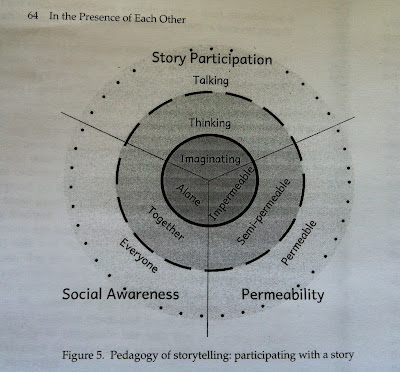Presence, as opposed to distance. This time of year, even presence of mind is scarce. In the Presence of Each Other: A Pedagogy of Storytelling by Johanna Kuyvenhoven presents a study of a classroom with a storytelling teacher. The definition of "presence" shows up late in the book, but offers much to think about: "The pedagogy of storytelling entails its medium of presence. The medium is the sounds of words, the faces and gestures of one another, and the warm contact of each other's bodies in physical place." (187) Which leads me to wonder about what removing one element might mean. When does presence become distance? What about time, being simultaneous, but at a distance? What about removing the sounds of words? What about telling stories back-to-back? There's an interesting diagram that illustrates Kuyvenhoven's model:

